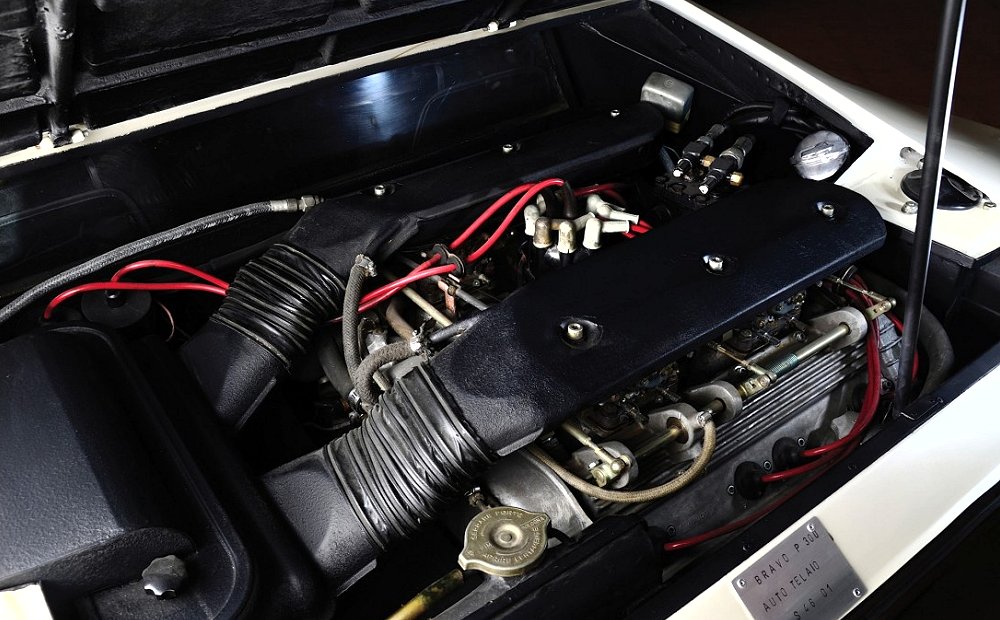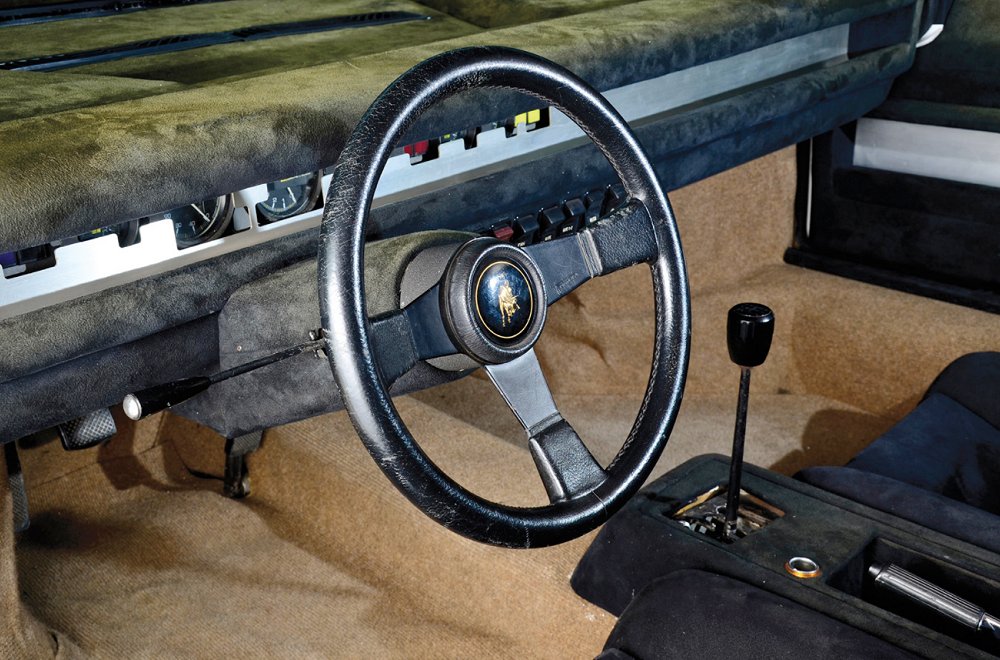Description
The Lamborghini Bravo Bertone, first unveiled at the 1974 Turin Motor Show, was a striking and compact concept car that represented Lamborghini’s vision for a smaller, more accessible mid-engine sports car. Designed by Marcello Gandini at Carrozzeria Bertone, the Bravo was conceived as a potential successor to the Urraco and a testbed for new ideas in both design and engineering. Although it never entered production, the Bravo became one of the most celebrated concept cars of the 1970s—an angular, futuristic creation that embodied the bold experimental spirit of its time.
The Bravo project began during a period of transition for Lamborghini. The company was exploring ways to expand its lineup beyond high-end V12 grand tourers like the Miura and Countach. Ferruccio Lamborghini wanted a smaller, more affordable model that could reach a broader audience while retaining the brand’s distinctive performance and flair. Working closely with Gandini, Bertone’s team developed the Bravo around the existing Urraco platform but reimagined it as a sharper, more radical evolution.
The Bravo’s design reflected Gandini’s emerging fascination with geometric purity and wedge-based forms. The body was low and wide, with taut, origami-like surfaces and crisp edges that echoed the Countach but in a more compact, approachable scale. Measuring just 3.8 meters long and 1.1 meters tall, the Bravo had proportions that conveyed both agility and aggression. The sharply angled nose, deep side intakes, and large rear buttresses gave it an unmistakably Lamborghini presence, while the flush glazing and clean roofline made it appear like a piece of functional sculpture.
One of the Bravo’s most distinctive features was its canopy-style cabin with large glass panels that wrapped seamlessly into the roof and pillars, giving the car a light, airy appearance. The glass-to-metal ratio was unusually high for the era, emphasizing visibility and openness—qualities Gandini had explored earlier in the Marzal. The rear featured a full-width louvered engine cover, minimal overhangs, and four square taillights set into a sharply defined tail section. Finished in a pearlescent white, the Bravo exuded the futuristic optimism that defined 1970s Italian design.
Underneath its sculpted exterior, the Bravo shared much of its mechanical DNA with the Lamborghini Urraco P300. Power came from a transversely mounted 2,992-cc V8 engine producing around 300 horsepower at 7,800 rpm. The engine was paired with a five-speed manual gearbox driving the rear wheels. Weighing less than 1,100 kilograms, the Bravo promised excellent performance, with projected figures of 0 to 100 km/h (62 mph) in under six seconds and a top speed near 260 km/h (162 mph). The chassis used a modified version of the Urraco’s steel monocoque, strengthened for testing purposes and fitted with independent suspension on all four corners.
Unlike many concept cars of its time, the Bravo was not just a static showpiece—it was a fully functional prototype. Lamborghini engineers tested it extensively, accumulating more than 40,000 kilometers of real-world mileage to evaluate its dynamics and reliability. These tests demonstrated that the car’s layout and performance potential were entirely viable for production. However, the economic challenges of the mid-1970s, combined with Lamborghini’s financial struggles and the global fuel crisis, meant that the Bravo project was ultimately shelved.
The interior of the Bravo was as bold as its exterior. The cabin featured a minimalist, driver-focused design with two deeply contoured seats, a simple instrument panel, and hexagonal switchgear that echoed Gandini’s fascination with geometry. The dashboard, center console, and door panels all reflected a sense of futuristic functionality, combining simplicity with avant-garde aesthetics. Despite its concept origins, the interior was well-finished, suggesting Lamborghini’s intent to make the car production-ready.
In retrospect, the Bravo was a pivotal moment in Lamborghini’s design evolution. Its sharp, angular lines and compact wedge form became stylistic hallmarks not only for the brand but for Italian sports car design throughout the late 1970s and 1980s. Elements of the Bravo’s design language could be seen in the later Countach updates, as well as influencing future Bertone projects such as the Fiat X1/9 and Lancia Stratos Zero.
Although the Bravo never reached production, its significance within Lamborghini’s history is immense. It demonstrated the company’s ability to blend radical design with practical engineering, serving as both a stylistic statement and a functional prototype. More importantly, it symbolized a moment when Lamborghini and Bertone were at their creative peak—when design was as much about imagination as it was about performance.
Today, the single Bravo prototype remains preserved in the Bertone collection, occasionally appearing at exhibitions and concours events where it continues to captivate audiences. Its clean geometry, perfect proportions, and unmistakable presence ensure its status as one of the most beautiful concept cars ever built. The Lamborghini Bravo Bertone was a car that dared to redefine the boundaries of design, and though it never became a production model, its influence still resonates as a timeless expression of Lamborghini’s design ambition and Bertone’s visionary artistry.





